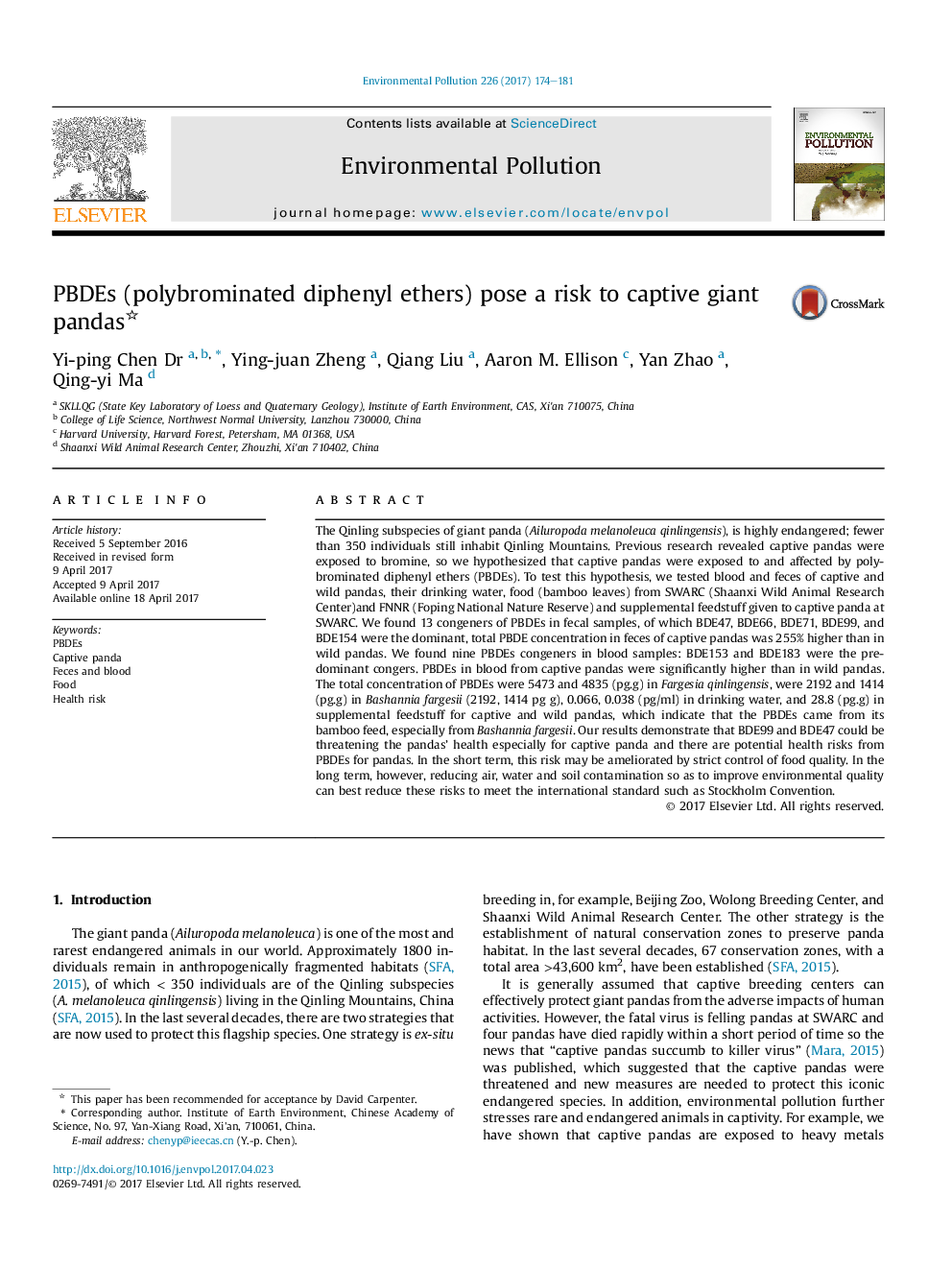| کد مقاله | کد نشریه | سال انتشار | مقاله انگلیسی | نسخه تمام متن |
|---|---|---|---|---|
| 5749079 | 1619147 | 2017 | 8 صفحه PDF | دانلود رایگان |

- Captive panda exposed higher toxic PBDE than wild panda.
- Thirteen congeners of PBDEs were in fecal.
- Nine congeners of PBDEs were in blood.
- PBDEs mainly came from its bamboo feed.
- Captive panda should give clean food during breeding.
The Qinling subspecies of giant panda (Ailuropoda melanoleuca qinlingensis), is highly endangered; fewer than 350 individuals still inhabit Qinling Mountains. Previous research revealed captive pandas were exposed to bromine, so we hypothesized that captive pandas were exposed to and affected by polybrominated diphenyl ethers (PBDEs). To test this hypothesis, we tested blood and feces of captive and wild pandas, their drinking water, food (bamboo leaves) from SWARC (Shaanxi Wild Animal Research Center)and FNNR (Foping National Nature Reserve) and supplemental feedstuff given to captive panda at SWARC. We found 13 congeners of PBDEs in fecal samples, of which BDE47, BDE66, BDE71, BDE99, and BDE154 were the dominant, total PBDE concentration in feces of captive pandas was 255% higher than in wild pandas. We found nine PBDEs congeners in blood samples: BDE153 and BDE183 were the predominant congers. PBDEs in blood from captive pandas were significantly higher than in wild pandas. The total concentration of PBDEs were 5473 and 4835 (pg.g) in Fargesia qinlingensis, were 2192 and 1414 (pg.g) in Bashannia fargesii (2192, 1414 pg g), 0.066, 0.038 (pg/ml) in drinking water, and 28.8 (pg.g) in supplemental feedstuff for captive and wild pandas, which indicate that the PBDEs came from its bamboo feed, especially from Bashannia fargesii. Our results demonstrate that BDE99 and BDE47 could be threatening the pandas' health especially for captive panda and there are potential health risks from PBDEs for pandas. In the short term, this risk may be ameliorated by strict control of food quality. In the long term, however, reducing air, water and soil contamination so as to improve environmental quality can best reduce these risks to meet the international standard such as Stockholm Convention.
The PBDEs of the captive and wild pandas' blood, dropping, drinking water, bamboo and supplemental feedstuff was tested and the result showed that captive panda's blood and droppings included higher PBDEs than that of the wild and the higher PBDEs may come from bamboo and its feedstuff, so “Green” food for pandas need be provided.286
Journal: Environmental Pollution - Volume 226, July 2017, Pages 174-181